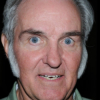Burt Rutan

Burt Rutan
Elbert Leander "Burt" Rutanis an American aerospace engineer noted for his originality in designing light, strong, unusual-looking, energy-efficient aircraft. He designed the record-breaking Voyager, which was the first plane to fly around the world without stopping or refueling, and the sub-orbital spaceplane SpaceShipOne, which won the Ansari X-Prize in 2004 for becoming the first privately funded spacecraft to enter the realm of space twice within a two-week period. With his VariEze design, Rutan is responsible for popularizing the canard configuration...
NationalityAmerican
ProfessionEngineer
Date of Birth17 June 1943
CityEstacada, OR
CountryUnited States of America